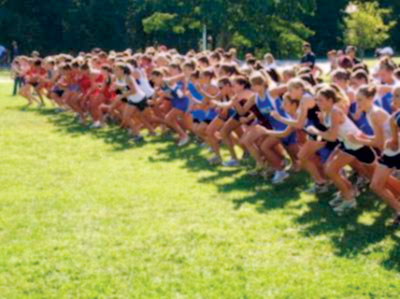All Nonfiction
- Bullying
- Books
- Academic
- Author Interviews
- Celebrity interviews
- College Articles
- College Essays
- Educator of the Year
- Heroes
- Interviews
- Memoir
- Personal Experience
- Sports
- Travel & Culture
All Opinions
- Bullying
- Current Events / Politics
- Discrimination
- Drugs / Alcohol / Smoking
- Entertainment / Celebrities
- Environment
- Love / Relationships
- Movies / Music / TV
- Pop Culture / Trends
- School / College
- Social Issues / Civics
- Spirituality / Religion
- Sports / Hobbies
All Hot Topics
- Bullying
- Community Service
- Environment
- Health
- Letters to the Editor
- Pride & Prejudice
- What Matters
- Back
Summer Guide
- Program Links
- Program Reviews
- Back
College Guide
- College Links
- College Reviews
- College Essays
- College Articles
- Back
David versus Goliath
When the sun rises over the horizon on a brisk fall morning, though the world is just beginning to open its eyes, my body is propelled into motion, following the bang of the adrenaline-inducing gunshot that signals the beginning of my journey. I live for these moments, and they are a permanent part of me. Providing me with empowerment, running acts as my motivation for rising above all obstacles and challenges I face in life and often leaves me breathless in more ways than one. Correspondingly, breathing is a crucial part of life that too many people take for granted, but I do not take breathing for granted. I live with Cystic Fibrosis.
Often accompanied by the undesirable tag of “disabled,” Cystic Fibrosis is a disease of the lungs and sometimes the pancreas and is the number one genetic killer of children and young adults in the world; however, it just so happens to be one of my most appreciated blessings. Providing me with a means of unyielding motivation, it helps carry me through every aspect of my life and fuels my passion for running. With every step I take, I realize how fortunate I am to be in the condition I am and actually have the ability to run countless miles. Nevertheless, I am very compliant to my breathing treatment schedule and medications: the key to living a long, healthy life. I have been successful in my running career in the sense that I have never given up, and I have often basked in the light of the pleasure of accomplishment--until this year arrived and with it a bundle of unforeseen difficulties.
This summer, even more so than in years past, I put tremendous effort into my training regimen for cross-country; I had run over ninety miles in the month of June alone. Bright as my path may have seemed, no mountain peak can be climbed without struggle. Shortly after enjoying the brilliant show of exploding lights the midsummer annually brings, I was bombarded by illnesses like a wartime plane, trying to dodge every bullet and continue on its path with unforeseen damage.
On a beautiful, sunny, nonetheless hot and humid day at practice, my symptoms attacked my 5’ 0’’ 95 lb. body. Immediately following the first couple steps I took, my keen intuition of my own body told me something wasn’t quite right. Coughing and gasping for air, my lungs were sent into a frenzy of relentless wheezing; however, knowing the importance of staying calm, I tried to relax and focus on my pace. “Kenzie, you okay?” gasped my coach, and in reply I nodded my head, desperately trying to throw in a smile for good measure.
Two miles into the run, a headache hit me, like a head on car collision, but as a result of my willfulness, I couldn’t convince my feet to stop their constant motion. Running a route that had long ago been stamped into my memory, I should’ve been fully aware of my surroundings, but I suddenly stopped as the road became muddled in my mind and morphed into many roads. ‘Where am I?’ my mind screamed from the inside of my body so loudly, my body began to shake tremulously as an aftershock. Desperately searching for help, but finding no one, my shaken instinct informed me I would have to get through this on my own, and so I took an iconic step, the first of many, towards not allowing my disease to control me. I fought it.
When I reached the school at long last, I breathed a tired sigh of relief. Attempting to give the impression that I felt fine, I began to run the sprints that followed. Somewhere in the back of my mind, I knew I was required to do eight one hundreds, but my mind, no matter how much it tried, couldn’t keep track of how many I had completed. I found myself asking one of my teammates, “We’ve done five, right?”
“No, that was two,” she responded alarmingly. After completing what I thought was the recommended amount of sprints, my coach dashed over and talked to me, but I couldn’t understand what she said, and with a bewildered face, I muttered, “What are you talking about?” Somehow, I drove home safely and called my mom, which at the touch of the call button all of the tears that had been welling up exploded, and I tried to tell her the story between sobs.
After a trip to the doctor’s, we discovered that I had a severe sinus infection that left me disoriented because my brain wasn’t getting enough oxygen. All sinus infections are taken seriously with “Cystic” patients because they can spread to the bronchioles and subsequently the lungs within a matter of days.
Cross country season started rapidly and so did my rollercoaster ride of sterile doctors offices, frustrations, and sickness. Following the reoccurrence of several sinus infections with nonresponsive medications, I had contracted what seemed to be bronchitis. “No running for three days,” the doctor ordered. Even though three days doesn’t seem that long, to me it was a prison sentence. For precautionary purposes, he ordered chest x-rays, and I, having been acquainted with the procedure since my childhood, didn’t think it to be anything terrible.
As my teammates prepared for a meet that night, I promised to come and support them, although I couldn’t run. At the end of the school day, someone ran up to me when I was about to leave and shoved a note in my hands that read, “Mackenzie, you are to come directly home after school, do NOT go to the meet.”
As clearly instructed, I drove home. Upon opening the door, my eyes fell upon my dad’s face that was void of his usually joking nature. I sensed that something was very wrong. “Dr. Nasr wants to admit you to the hospital up in Ann Arbor, tonight. They found mucus plugs on your x-rays.” Stunned and sent into a state of absolute shock, I struggled to find words appropriate for the situation. My doctor’s words echoed in my mind: “You have been fortunate not to have been admitted already.” Knowing that most children with Cystic Fibrosis are hospitalized for “tune-ups” every year starting at a young age, I was aware of the impending hospitalization; however, the thought of being in the hospital never crossed my mind because I live such a blessed and “normal” life.
Later that night, we arrived at the University of Michigan Hospital; I continued to be optimistic and had persuaded myself that I would be back in the car content to make the two-hour trip home as soon as the doctors had a chance to examine me. Unfortunately, that didn’t happen. If I were ever frightened during this experience, it would’ve been when I first heard the words “PICC line.” “No,” I firmly stated, “we haven’t talked about it yet.” The purpose of a PICC line is to receive medications intravenously at home, and I was mindful that this would most likely last for three weeks and would mean I wouldn’t be able to run for three weeks.
As the sun rose vividly on the next day, so did my outlook on the situation; I thought to myself, If six-year-olds can do this, you certainly can too; think about them. Moments later, a doctor, clad in white from head to toe, walked into my room and said, “We do want to put in a PICC line; the team will be coming by shortly to explain the procedure.”
“Well, I guess I couldn’t hold the record forever,” I said trying to appear lighthearted because, in reality, it is an enormous feat for a sixteen-year-old with Cystic Fibrosis to have never been hospitalized. Following the placement of the PICC line in my arm, my focus officially shifted over to running; I bombarded every nurse and doctor I saw with questions about running with a PICC line, “Do you think I’ll be able to run?” ”When will I be able to run?” “Can I practice with my team?” “Will I be able to run in meets?”
Finally, my head doctor returned with answers, declaring, “You should be able to run with the line in, but we are concerned about sweat moving the line and the line moving its way into your neck.”
Wow, that sounds painful, I thought to myself, but then I realized not running for three weeks would be much more painful. The physical therapist, who quickly became one of my favorite doctors, told me that I could try running on the treadmill to see how it felt if I wanted too. “Of course!” I said jumping on the opportunity, even though I was scared of the outcome, “I would love to.”
Impressed with my determination, the doctors in the room marveled and joked, “I don’t think that treadmill has ever gone that fast.” Like a child learning to walk for the first time, I was beaming and ecstatic to be visiting my old friend called running.
After only four days, I was pleased to leave the sterile smell of the hospital, and I started I.V. medications at home for four tedious hours every day. With my strict infusion schedule, late nights and early mornings were common for three weeks; therefore, going to school was challenging, but being deprived of running was much more difficult. Unable to control the powerful urge for physical activity, I made time to run on my own on the treadmill every night.
Only a couple of weeks later, I am doing remarkably well and am even more motivated to inspire other people with Cystic Fibrosis to take their treatment schedules seriously and do all that that they can to keep active and stay healthy. I am living, breathing proof that running heals, and that’s why I’m so impassioned by it. I was fortunate to go through this experience because it made me a stronger runner and person than I could’ve ever been otherwise. I’ve decide the number three must be significant in my journey: my original doctor’s sentence to no running was three days; I couldn’t run with my team for three weeks because of my medication schedule. Three weeks after having my PICC line removed and returning to practice, I helped my team make it to regionals despite my Cystic Fibrosis. Yes, I have Cystic Fibrosis. I may be small in stature fighting this big disease; but like David versus Goliath, I will fight, and I will win.

Similar Articles
JOIN THE DISCUSSION
This article has 1 comment.
